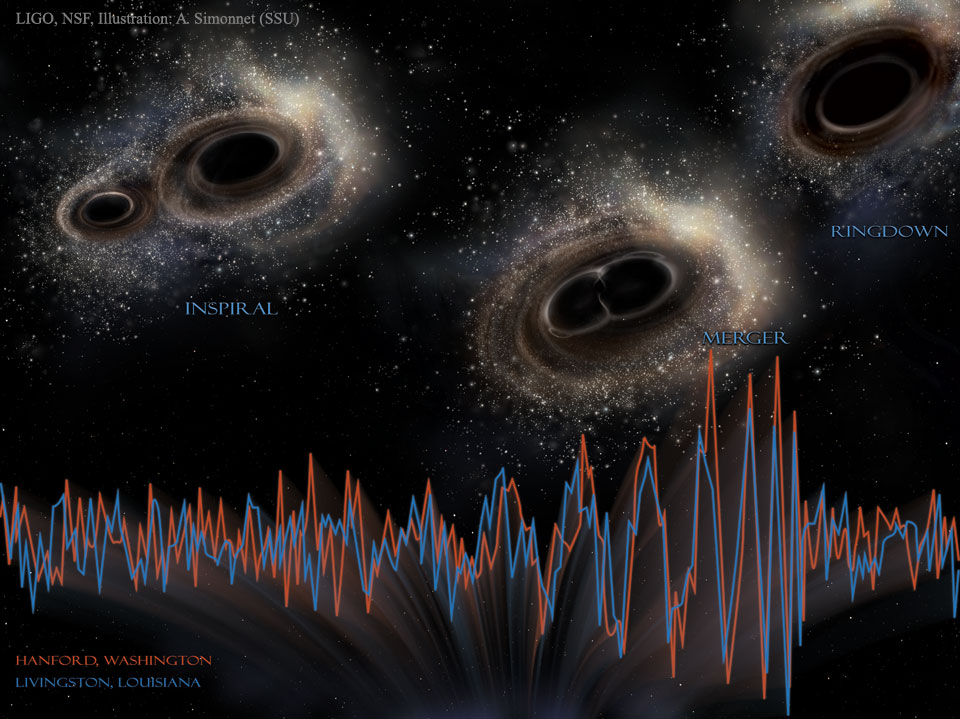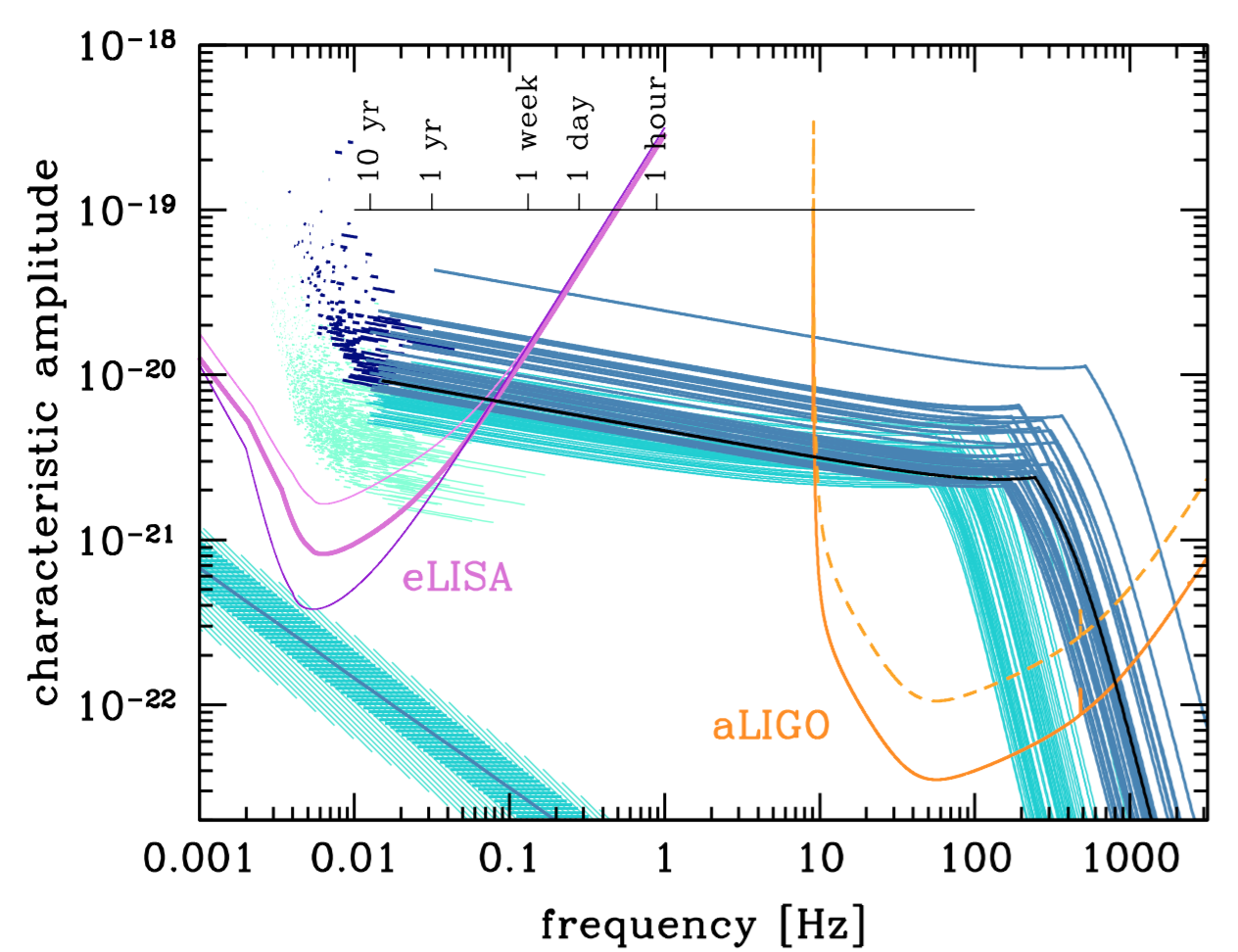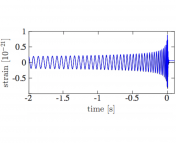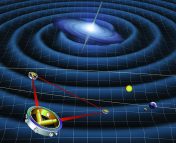Title: The promise of multi-band gravitational wave astronomy after GW150914
Author: Alberto Sesana
First author’s institution: University of Birmingham, UK
Status: Published in Physical Review Letters (2016) [open access]
A hundred years ago, Einstein published a new theory of gravity, the General Theory of Relativity. Massive objects, like the Sun, curve the geometry of the spacetime around them. The curvature of the spacetime then dictates the motion of other objects around them, e.g., the orbit of the Earth around the Sun. The theory predicts that when massive objects, like black holes (BHs) accelerate, they perturb the spacetime and produce gravitational waves, tiny ripples in spacetime that propagate outwards with the speed of light.
However, it wasn’t until only a year ago that this prediction was directly confirmed. On September 14, 2015, the Laser Interferometer Gravitational-Wave Observatory (LIGO) detected gravitational waves (GWs) from two colliding black holes (also see Abbott et al. 2016 for the discovery paper). This feat of science and engineering, decades in the making, opened a new window to observe the universe and signifies the beginning of a new exciting era in modern astronomy!

Figure 1: The gravitational waveform as seen by the LIGO detector in Hanford, WA (red) and in Livingston, LA (blue). The illustration on the top shows the stages of the binary merger that correspond to the different parts of the waveform.
From the waveform shown in Figure 1, we can infer that the binary that produced GW150914 initially consisted of two black holes with masses about 36 and 29 times the mass of the sun, which merged to form a new black hole of 62 solar masses, releasing the remaining 3 solar masses in gravitational radiation. The masses of the black holes were surprisingly high, compared to most astronomers’ expectations (from observations of other BH systems in the galaxy, we expected binaries with BHs of about 10 solar masses), challenging our understanding of binary formation.
This paper points out that massive binaries, like GW150914, produce strong gravitational radiation at earlier stages of their evolution, e.g., years before the merger, when the binary is at larger separations, orbiting at lower frequencies. They found that the low-frequency GWs could be detectable by the Laser Interferometer Space Antenna (LISA). LISA will be a space-based GW observatory sensitive in the milli-Hertz frequencies, which cannot be detected from the ground.

Figure 2: The gravitational wave amplitude for a distribution of binaries with masses similar to GW150914. Each line represents the final years of the evolution of each binary. The purple and orange line show the sensitivity of LISA and LIGO, respectively.
If we could detect binary black holes long before they merge, we could learn a lot more about the merger and the sources themselves. First, the binary evolves in the LISA band for several years, as opposed to a few seconds in the LIGO band. This will allow us to constrain the parameters of the binary (e.g., the BH masses, distance, etc) to very high precision. Additionally, we will be able to predict the exact time of the merger within seconds and the location of the merger within about a square degree in the sky (for comparison GW150914 was localized within 100 deg^2). This huge improvement in localization, combined with the ability to predict the exact time of the merger, will greatly facilitate the searches for electromagnetic counterparts, i.e. electromagnetic radiation produced during the merger. The detection of light associated with GWs (or even the lack of counterparts to deep limits) will help us understand the environments, in which BH mergers occur. Last but not least, since LISA is still in the design phase, studies like this will inform the decisions on the technical characteristics of the instrument.





Regarding gravitational waves, we should bear in mind there are various meanings of the expression gravitational waves, and those detected by LIGO experiment are not the cause of gravity force. However, they are most probably related to the so called expansion of the Universe. https://molwick.com/en/gravitation/072-gravitational-waves.html